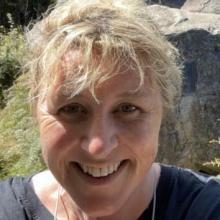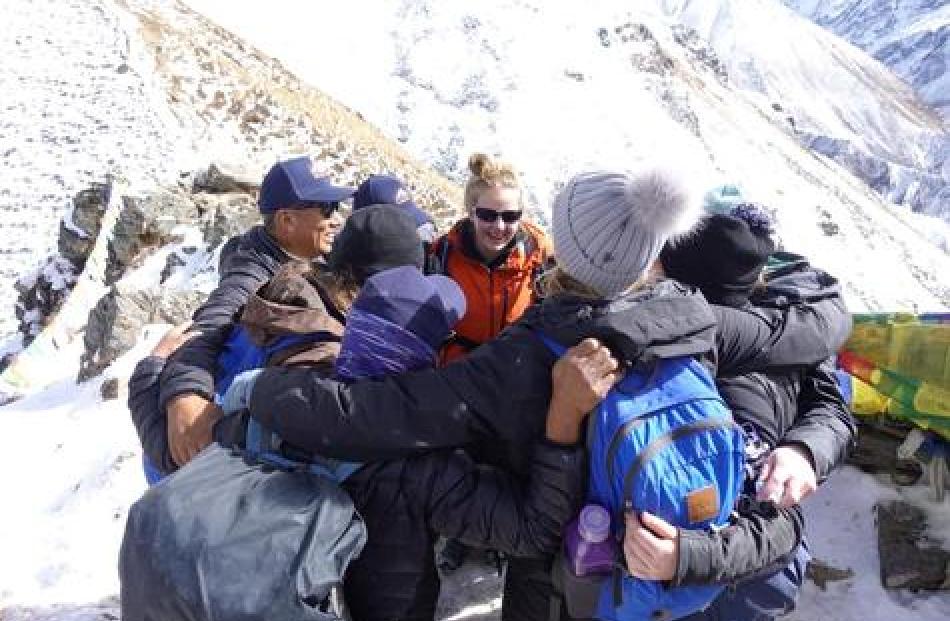At the end of last year, 29 Lincoln High School students travelled to Nepal with World Challenge, a global experiential travel provider for schools. Deputy principal Kylie Horgan reports.
Currently there is a great deal of conversation going on in our political, educational and community spheres about our schools and the education they provide. There is a specific focus on literacy and numeracy, the traditional ‘core’ skills, and knowledge that we believe our young people need to have to thrive in a changing world.
As I read the journal entries shared by the 28 students who took part in the World Challenge expedition, I see that they are taking something much more precious than reading or writing with them into the futures they build for themselves and the communities they contribute to.

The eight-day trek in the Langtang Valley was challenging. Day one was nothing short of gruelling with an altitude of 1100 metres ascended over 11km. Step after step the students challenged both their mental and physical fitness. But over these eight days, friendships and bonds were created through extreme shared experiences as they trekked from village to village, immersing themselves in the lives of the Nepalese communities they passed along the way.
The experience included connecting with children, building relationships with our Nepalese support team of porters and sherpas, visiting stupa and memorials from the Langtang landslide, experiencing the impact that the support of local trade can have upon a family, helping prepare meals, meditating in monasteries only a few metres from handwritten texts that are thousands of years old and having the timing of your trip coinciding with the visit of a Holy Lama to the area.
To top this all off, as long as altitude symptoms or other sickness didn’t prevent, they were able to ascend one of two peaks of 4400m and/or 4700m.
The second component of the expedition was the community work. The two teams - Lang and Tang, named after the Langtang valley – participated in a community project in a small rural school close to the bustling city of Pokhara, either before the trek or following the trek, depending on the team.
Where the trek component can be at times an individual pursuit, the community project required the teams to come together in pursuit of a shared goal that was for the benefit of a community that was not their own.
The ‘welcomes’ to the schools and communities was a tearjerker. The air was thick and heavy with gratitude, love, and happiness from the Nepalese people it almost choked you with emotion. The students were overwhelmed as for many of them, it was the first time they had ever experienced such a strong community connection.
Intergenerational families, students and staff were all present to welcome us to their humble community, laying the students with wreaths of flowers and blessing their temples with red chalk.
I purposefully stood back to the side of the gate entrance to observe the awe and amazement of our young people as they experienced this for the first time. I remember thinking to myself – you can’t learn this in a classroom. You can’t learn this in a book. But in many ways, these are some of the most important educational opportunities that our young people can have. This is what builds character, values diversity, builds resilience and embraces change and growth. And these are, in many ways, what will create successful futures and communities. Futures where our young people have pushed themselves mentally and physically and now feel like they can do anything.
“Nepal has changed my perspective on what is happening around me and to me. I hiked for eight days and helped in a school – I feel like I can do anything,” one student said.
In the two schools in which they worked, the students contributed to extensive maintenance work, carried blocks and sand up a hill to the school to help build two new classrooms, painted alphabets and numbers onto classroom walls, painted murals and also spent time playing and engaging with students.
The impact they had in these schools and subsequently the impact the experience had upon our LHS challengers was significant.
“I feel so lucky and grateful. It changed the way I see my life as I now realise my privilege and that I have the ability to aid others,” another student said.
The final component of the expedition was the cultural and sightseeing aspect. One team challenged themselves with some white-water rafting and overnight riverside camping, while the other experienced a cooking class with a non-profit organisation called Seven Sisters who work to increase literacy and opportunities for women across Nepal. The monkey temple in Kathmandu was ventured to, as well as an overnighter in the heritage city of Bhaktapur where students had a guided tour of the historical royal palace temples, baths and grounds.
Coming home was bittersweet as students pounced upon the unsuspecting staff at McDonald's in Auckland Airport at 1am, once customs and immigration had been cleared. In Christchurch, the focus was thankfully more so upon reuniting with family and friends rather than Big Macs and thick shakes.
I suspect like the staff the students have spent a lot of time reflecting upon their expedition to Nepal. As a staff member, it was a humbling experience in many ways. Sometimes we get so fixed on our classroom work and measuring outcomes to gauge an idea of what success looks like, that we can forget what experiences and challenges outside the classroom can offer our young people.
Because these experiences are also fundraised and/or self-funded it can seem that they are not a reality for everyone to have, but with the support of our Selwyn ‘village’ we were able to reduce these barriers significantly for these young people.
Firstly, we would like to thank our principal Kathy Paterson and the board of trustees who gave permission and their support for the expedition. We would also like to thank all our amazing supporters, parents, friends and businesses that contributed to this expedition.
The contribution and support received has created 28 braver, wiser, more confident, more grateful, more resilient and more willing young people to contribute and participate in our community.
I would love to be able to put this into a traditional school context for you so its success could be measured easily with a test/exam result number or percentage, but I can’t. The knowledge and character that these students now have because of this expedition cannot be measured so easily. However, I am confident you will agree, that even if we can’t measure them ‘nicely’, it shouldn’t, and doesn’t, make them any less valuable to future participants and leaders in our communities.




















